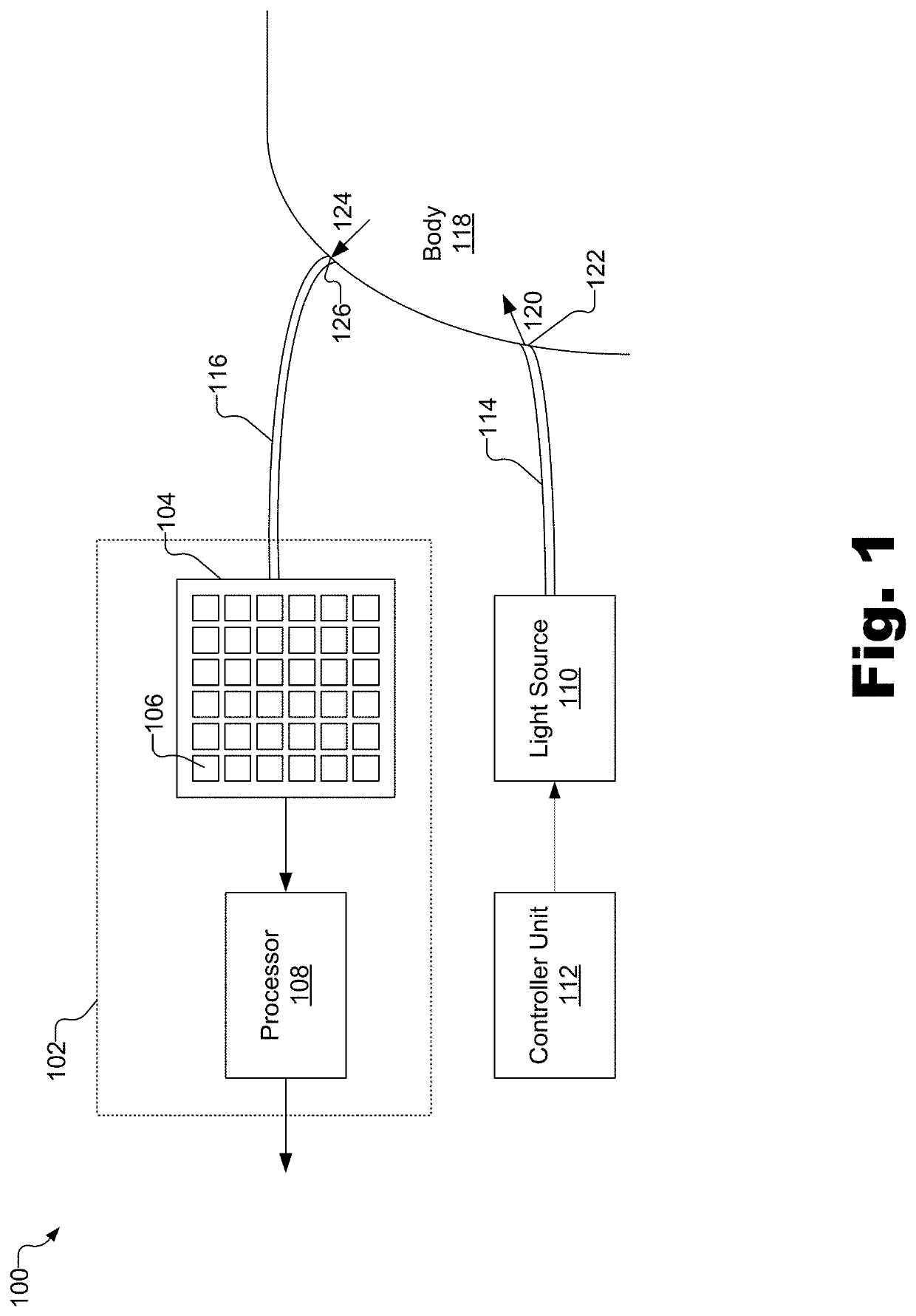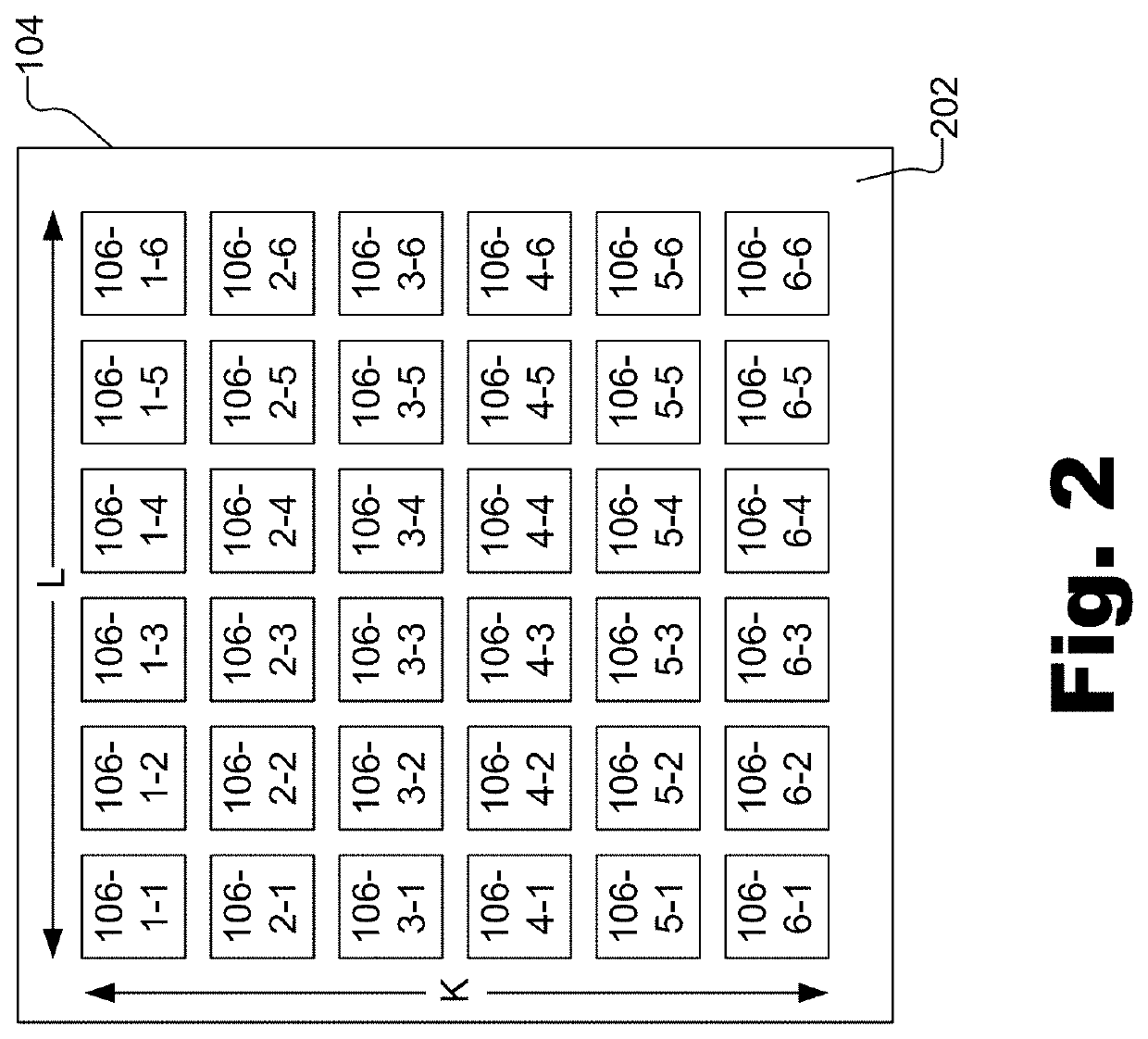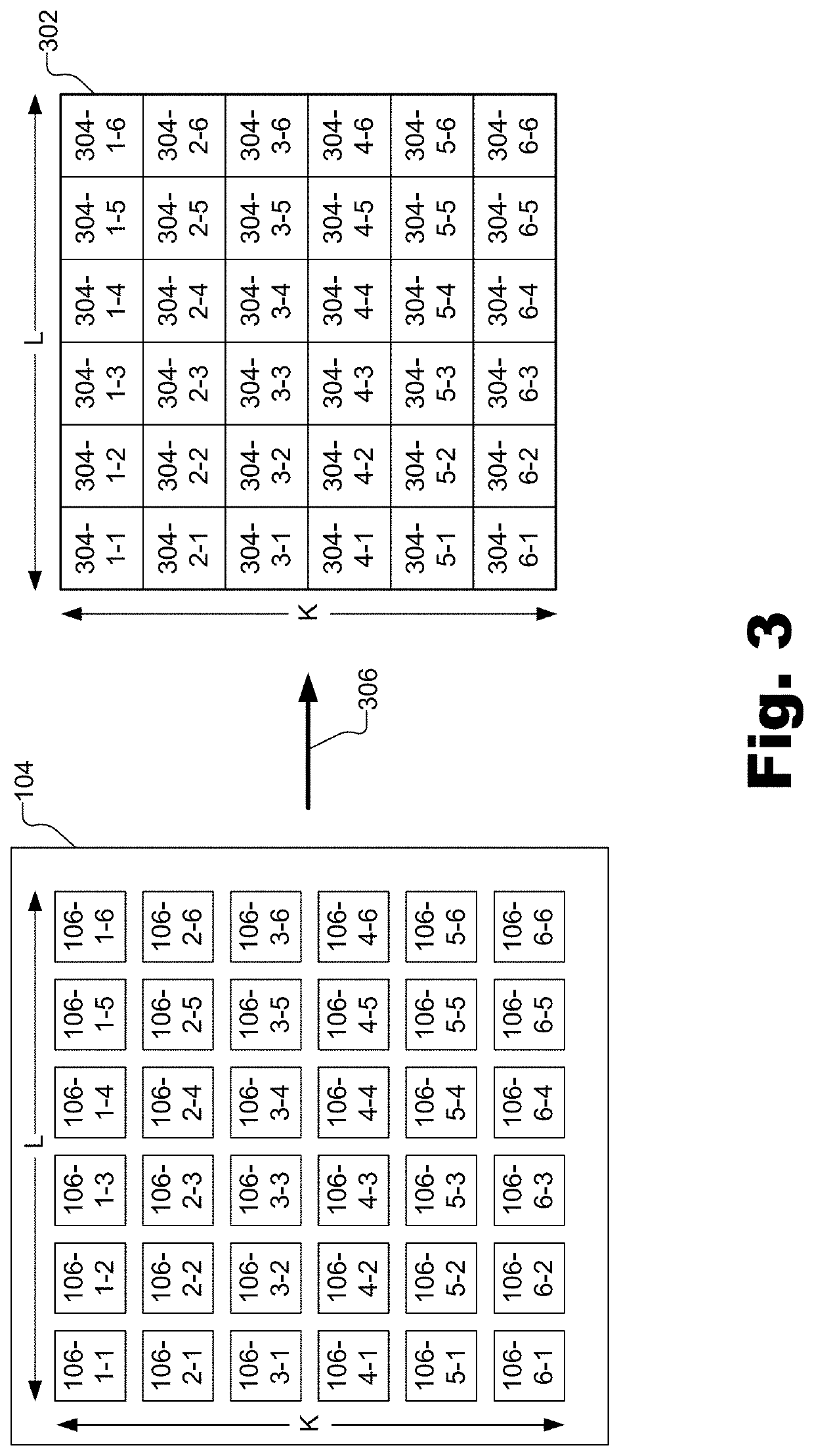Spatial and Temporal-based Diffusive Correlation Spectroscopy Systems and Methods
a diffusive correlation and spectroscopy technology, applied in the field of spatial and temporal-based diffusive correlation spectroscopy systems and methods, can solve the problem that conventional dcs systems cannot operate fast enough to detect event-related optical signals
- Summary
- Abstract
- Description
- Claims
- Application Information
AI Technical Summary
Problems solved by technology
Method used
Image
Examples
Embodiment Construction
[0020]Spatial and temporal-based DCS systems and methods are described herein. In some examples, as will be described in more detail below, a light source (e.g., a laser diode) generates coherent light that enters a body (e.g., a head of a subject) at an input location. The incident light scatters through many different optical paths within the body. Because of its high coherence, the light emerges from the body with the ability to interfere with itself to produce an interference pattern at one or more output locations. This interference pattern takes the form of a fully developed speckle pattern at the one or more output locations. A DCS system as described herein may determine spatiotemporal correlation measurement values representative of speckle decorrelation (i.e., how speckles within the speckle pattern vary with respect to time and space).
[0021]To this end, the DCS system includes a K by L photodetector array and a processor coupled to an output of the photodetector array. Th...
PUM
 Login to View More
Login to View More Abstract
Description
Claims
Application Information
 Login to View More
Login to View More - R&D
- Intellectual Property
- Life Sciences
- Materials
- Tech Scout
- Unparalleled Data Quality
- Higher Quality Content
- 60% Fewer Hallucinations
Browse by: Latest US Patents, China's latest patents, Technical Efficacy Thesaurus, Application Domain, Technology Topic, Popular Technical Reports.
© 2025 PatSnap. All rights reserved.Legal|Privacy policy|Modern Slavery Act Transparency Statement|Sitemap|About US| Contact US: help@patsnap.com



